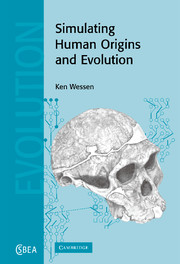10 - Simulating a single population
Published online by Cambridge University Press: 14 August 2009
Summary
Given the wide variety of parameters available to the simulation, trying to isolate and understand the important effects of each is of obvious importance in determining exactly how it can be applied to particular situations of interest. For this reason only single-population simulations are employed throughout this chapter, initially keeping as close as possible to the simple constant population theory outlined in Section 8.1, and then allowing the parameters controlling population size, sex ratio, fertility rate and breeding pattern to change in controlled ways.
Basic coalescent theory (Kingman, 1982b; Hudson, 1990) describes lineage merging in terms of the effective population size, N, and can thus be applied to populations with many different mating patterns and sex ratios by using an appropriate value for N. Extensions to varying population size have also been investigated (Harpending et al., 1998; Tavaré et al., 1997), but the variation in these models is quite limited in nature. The simulation Genie allows study of a much wider range of problems, but it must first be demonstrated that it agrees with the theory in these simple limits.
Constant demographics
The theory outlined in Section 8.1 is for a population of constant size, and therefore the first set of simulations focus on this situation specifically.
- Type
- Chapter
- Information
- Simulating Human Origins and Evolution , pp. 162 - 185Publisher: Cambridge University PressPrint publication year: 2005



